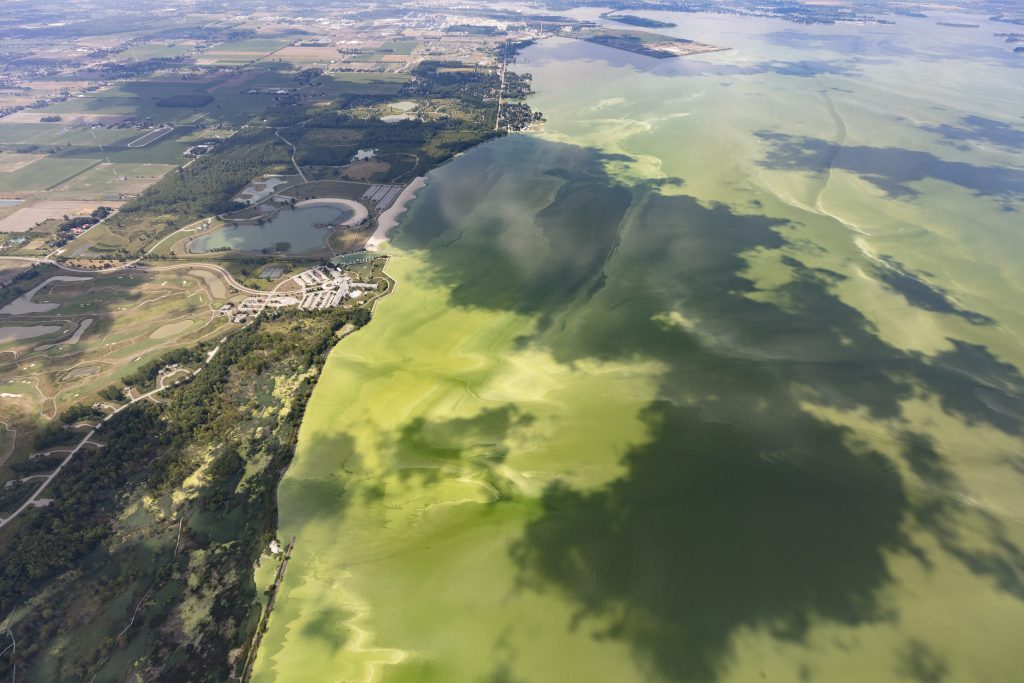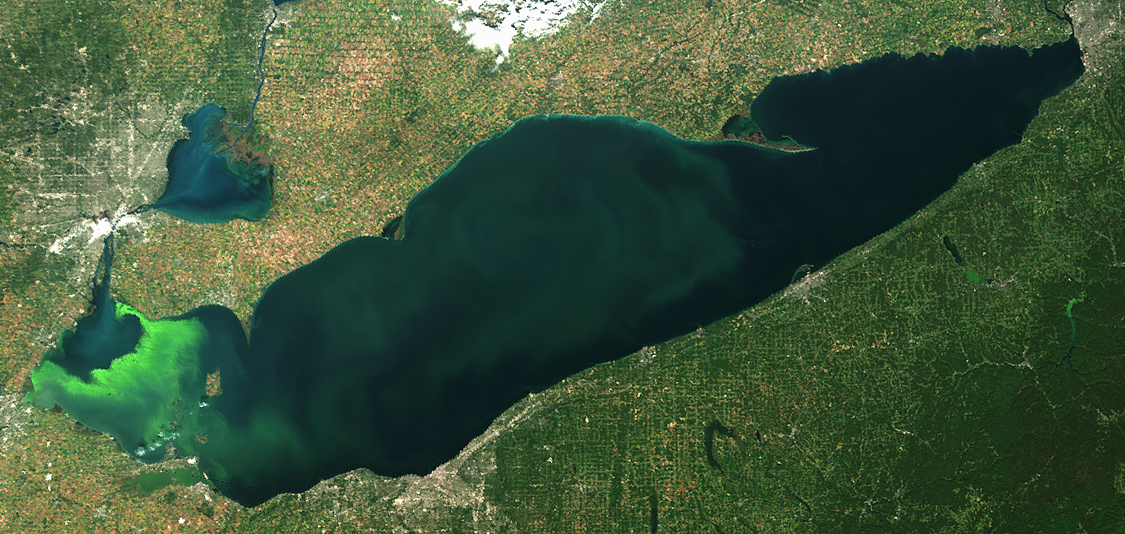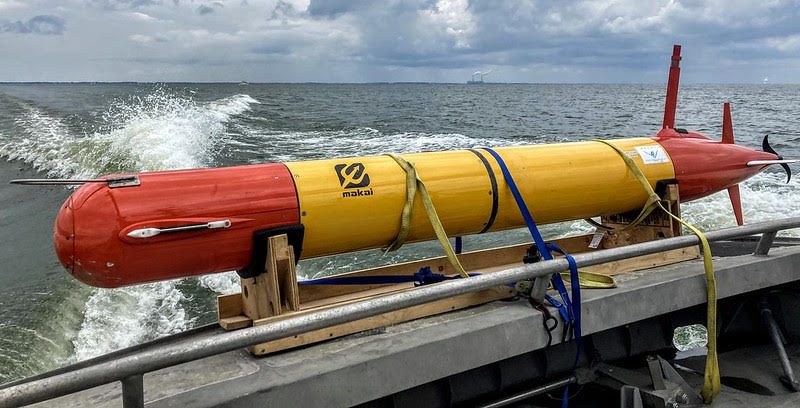Two underwater robots will be gliding throughout the western Lake Erie basin this week, as NOAA and its partners at the Monterey Bay Aquarium Research Institute (MBARI) test technology to autonomously monitor and measure the toxicity of harmful algal blooms in the Great Lakes.
The robots — known as long-range autonomous underwater vehicles (LRAUVs) — will be deployed through August 26. During that time, one robot will search for patches of algae that may be toxic, so that scientists know how far the bloom extends and where it’s most intense. The other robot will carry a 3rd generation (3G) Environmental Sample Processor (ESP) — known as NOAA’s “lab in a can” — to measure microcystin, a potent liver toxin produced by the cyanobacteria that cause harmful algal blooms in the Great Lakes.

The activities of the two robots will be coordinated throughout the tests. Part of the toxin-detecting robot’s course is pre-programmed to visit particular sites that are regularly sampled by NOAA scientists, but it will also have a chance to demonstrate its ability to target areas that the first robot detects as having particularly high concentrations of algae — areas that are suspected of being toxic.
The goal of these tests is to see how these underwater vehicles perform in the field and what tweaks need to be made in order to transition these tools into a permanent part of NOAA’s efforts to forecast, monitor, and understand harmful algal blooms in the Great Lakes. This is NOAA’s second year testing the LRAUVs, and the first year that two vehicles have gone out simultaneously.
The two vehicles will be accompanied by an airplane that will be flying below the clouds, taking hyperspectral images of the bloom and mapping it from the sky. These images provide a three-dimensional view of what the bloom looks like on and below the water’s surface, and helps scientists understand how the bloom travels through the water column and changes its toxicity.
“The ability to measure algal toxins ‘on the fly’ using autonomous vehicles will be a game changer for researchers and resource managers,” said Chris Scholin, president and CEO of MBARI. “Lake Erie and Monterey Bay are the only places in the world where this has been attempted previously.”
Autonomous underwater vehicles are useful research tools, as they can collect high-quality data more efficiently and cost-effectively than scientists taking samples from a ship or along the shore. They can be deployed day and night in all weather conditions, and can provide more detailed information to researchers and drinking water managers than other monitoring methods.
Satellites, for instance, are useful in determining the size and distribution of an algal bloom over large areas, but they do not differentiate whether a bloom is toxic or simply a nuisance. AUVs outfitted with the 3G ESP can compliment what can be seen from the air or space by monitoring the toxicity of a bloom as they move through the water, sending that information to scientists as they go. The combination of aerial and in-water surveys provides a way to detect regions of the lake where the bloom is particularly toxic. That information in turn will help drinking and recreational water managers make timely decisions about water safety.
Not only do the AUVs have potential as an operational tool to gather information on the toxicity of the bloom, they can also collect information on the genetic composition of the cyanobacteria, and this — paired with data like water temperature, nutrient levels, and wind conditions — will help scientists and resource managers understand the factors that lead to blooms. Once these underwater robots are fully operational, they will give NOAA the ability to detect, monitor, and map harmful algal blooms and their toxicity on a 24/7 basis.


“We are always looking for ways to improve our understanding of harmful algal blooms in the Great Lakes, and having the ability to continuously detect and report on these blooms would be a big boost to our efforts,” said Debbie Lee, director of NOAA’s Great Lakes Environmental Research Laboratory (GLERL). “Harmful algal blooms have a big impact on Great Lakes residents, and by teaming up with MBARI to advance technological innovations of these AUVs, we’re working to protect lives here in the Great Lakes and beyond.”
Continuous monitoring of harmful algal blooms is important, because these blooms — which develop when excess nutrients from fertilizers, sewers, and water treatment plants are washed into the Great Lakes, causing algae to grow out of control — can contaminate drinking water and pose a risk to people and animals that come in contact with the lakes. NOAA issues forecasts for harmful algal blooms in Lake Erie and the Gulf of Mexico each year, monitors water quality in bloom locations and provides regular updates and analysis once a bloom occurs. Learn more about NOAA and the Cooperative Institute for Great Lakes Research (CIGLR) work on harmful algal blooms by visiting the NOAA National Ocean Service website, and take a look at Great Lakes bloom data on the NOAA Great Lakes Environmental Research Laboratory’s website.



